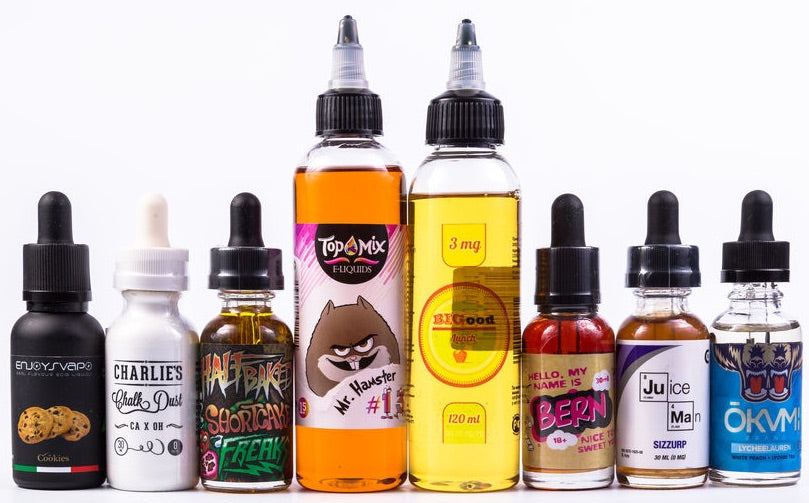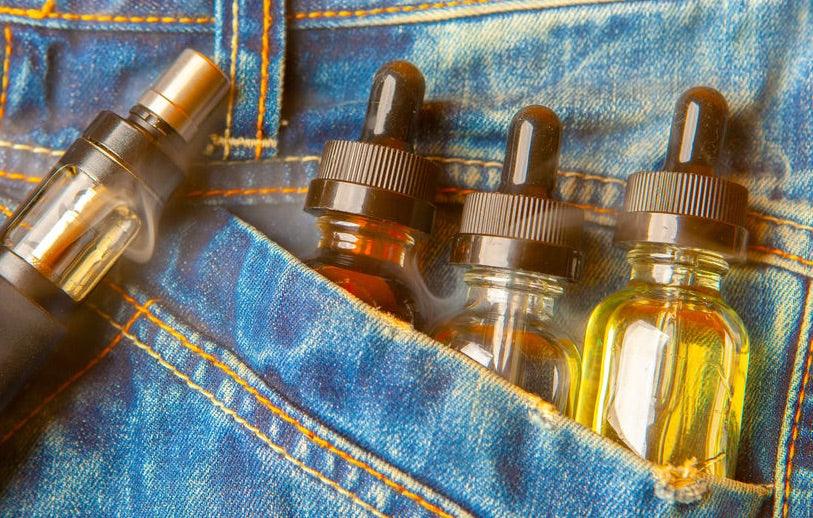The History and Evolution of the Vape Juice Industry
Can you believe that the vape juice industry is more than a decade old? Sometimes, it feels like vaping has just been invented – and other times, it feels like it’s been around forever. Regardless of whether you’re new to vaping or are an experienced veteran, though, there’s no denying the fact that the history of e-liquid is quite an interesting story indeed. Unless you’ve been vaping since the beginning, in fact, you might not even been aware of all of the changes the industry has gone through over the years – but this article is going to bring you up to speed. This is the history and evolution of the vape juice industry.
These Are the Best Vape Juice Brands on the Market Today
The vape juice industry has come a long way since the early days. Today's best e-liquids are smooth and full of flavor. They're also mixed in ultra-modern clean room environments that take full advantage of today's advanced automation technologies. Modern production methods help to ensure that every bottle is exactly the same. Here are just a few of the top vape juice brands on the market today.
- Naked 100: There probably isn't a vape juice brand in the world today that's better known than Naked 100. Founded when the vaping industry was still in its infancy, Naked 100 built its reputation one bottle at a time by providing a product that was delicious, completely consistent and surprisingly affordable compared to the other vape juices that were on the market at the time. Many of Naked 100's flavors have become absolute legends of the industry, including tropical-tinged e-liquids such as Lava Flow and Hawaiian POG.
- Drip More: If you love candy-flavored e-liquids, you've got to try Drip More because there's simply nothing better. Drip More started out as a maker of great candy vape juices that perfectly replicated the flavors of some of the world's leading brands. That was enough to propel the company to worldwide fame, and they've never stopped releasing great new products since those early days.
- Dinner Lady: Dinner Lady might be the world's leading maker of dessert-themed vape juices. Dessert is always the best part of dinner, so we think the company's name is actually quite appropriate! If you're not sure which Dinner Lady e-liquid to try first, you should definitely start with Lemon Tart because it is perhaps the most famous lemon e-liquid in the world. Lemon custard and flaky pastry combine to create a dessert experience you'll want to savor every day.
Chinese Laboratories Developed the First E-Liquids

You probably already know the story behind the invention of the modern e-cigarette. Chinese pharmacist Hon Lik invented the e-cigarette because he wanted to kick his smoking habit and because he thought that there might be a market for such a product. He was correct that people would want to buy e-cigarettes, and his employer – Ruyan – brought the product quickly to the market. Ruyan developed the first vape juices, giving each one a slightly different tobacco-inspired flavor profile. Ruyan gave numbers to each of its vape juices, and an e-liquid called RY4 became the most famous one. RY4 had a tobacco-and-caramel flavor that people really liked, and it was so popular that you can still find RY4-inspired e-liquids today.
Ruyan eventually changed its name to Dragonite, and Dragonite’s vaping-related interests were purchased by Imperial Tobacco in 2013. By then, though, the vape juice industry was in full swing, and many other Chinese companies had taken up the mantle and were producing e-liquid of their own. Some of the most famous early Chinese e-liquid companies included Dekang and Hangsen. Both companies are still around today.
Chinese-made e-liquids are typically characterized by simple flavor profiles and a complete lack of sweetness. How people feel about those characteristics, though, tends to differ. Some people appreciate the simpler and more straightforward flavor profiles. Everyone appreciates the fact that unsweetened e-liquids help their coils last longer. Some people, however, find Chinese-made e-liquids to have a certain “chemical” taste that they find off-putting.
Domestic Vape Juice Brands Began to Appear
As soon as it became obvious in the United States and in the rest of the world that the vaping industry was here to stay, little mom-and-pop vape juice companies began to appear. Most of those companies are now lost to history, but a few of them became the major vape juice brands that you can still buy today.
When domestic vape juice production began, flavor profiles became a bit sweeter than they were in the beginning. Although it would still be a while before e-liquid companies began using added sweeteners in their products, the industry did begin to see flavor profiles like cheesecake, vanilla ice cream and various fruit flavors. Flavor profiles, however, were still simpler on the whole in those days. Companies created enormous selections of single-flavor and double-flavor e-liquids in an attempt to become the brand that offered more flavors than anyone else. Combining various fruits with a cheesecake base, for instance, a company might create a blueberry cheesecake e-liquid, a strawberry cheesecake e-liquid, a raspberry cheesecake e-liquid and so on.
Over time, vapers began to demand more interesting and creative flavor blends. The vape juice companies that didn’t innovate slowly faded away.
Tobacco Extracts Briefly Became Popular

When vapers began to demand e-liquids with more interesting flavor profiles, some e-liquid companies began to develop their own flavoring agents by steeping tobacco leaves in solvents to create natural tobacco extracts. Although tobacco extracts never led to the creation of e-liquids that tasted like real cigarettes, they definitely made it possible to create the most realistic tobacco vape juice that had yet been developed.
Although naturally extracted tobacco e-liquid was popular for a while, its popularity faded fairly quickly as most mainstream vapers decided that they’d rather enjoy sweet flavors.
Vape Juice Companies Became More Professional – and Flavor Profiles Got Sweeter

By the mid-2010s, the vape juice industry was in a period of rapid growth. The companies who reaped the benefit of that growth phase were the ones that professionalized their operations by moving to true clean room facilities, by embracing automation and by anticipating upcoming regulations and complying with those regulations in advance. The biggest and most popular e-liquid companies today often the ones who were first to add ingredient lists to their labels, to begin using child-resistant bottles and to use professionally printed labels. Once the industry got to the point at which truly professional e-liquids were on the shelves at every vape shop, the mom-and-pop e-liquid brands began to fade away.
While the vape juice companies of the world were increasing their level of professionalism, they were also developing flavor profiles that were more interesting and more complex – and much sweeter. Vape juice companies were adding sucralose to their products by the mid 2010s, and that enabled the creation of the most realistic sweet flavor profiles that anyone had ever tasted. This era saw the beginning of two flavor profiles – cereal and custard – that became extremely popular and remain so today.
Whether the popularity of sucralose as a sweetener is a good or bad thing for the vape juice industry is a matter of continued debate. On one hand, sucralose has enabled the creation of some of the most delicious sweet e-liquids ever developed. On the other hand, sucralose also leaves behind a layer of residue that shortens coil life. Although most mainstream e-liquids sold today are sweetened, there are still plenty of unsweetened e-liquids available for those who want their atomizer coils to last longer.
Nicotine Salt Entered the Vape Juice Market
During the second half of the 2010s, a new type of e-liquid – nicotine salt e-liquid – entered the market. Up to that point, e-liquid had always used the freebase form of nicotine. Freebase nicotine is the most bioavailable form of nicotine, and it’s what’s used in nicotine replacement products like lozenges and gums. In e-liquid, though, freebase nicotine has one shortcoming in that it can be very harsh to inhale at high nicotine strengths. With freebase nicotine e-liquid, it is virtually impossible for a small e-cigarette to be as satisfying as a tobacco cigarette because the nicotine strength that the e-liquid would need to have would be too unpleasant to inhale.
The benefit of nicotine salt is that it has a more neutral pH than freebase nicotine, and at higher nicotine strengths, the lower pH makes it much easier to inhale. With freebase nicotine e-liquid, it’s rare to find nicotine strengths higher than 18 mg/ml because most people can’t tolerate nicotine strengths higher than that. With nicotine salt, on the other hand, it’s possible to create completely smooth e-liquids with nicotine strengths of 50 mg/ml and even higher. Nicotine salt vape juice has become extremely important among the new vapers who generally use very small vaping devices.
The E-Liquid Industry Matured

By the end of the 2010s, the vape juice industry had become fully mature and was entering its first major consolidation phase. Some older e-liquid companies shut down, and other small brands were acquired by the larger companies that continued to grow.
During this consolidation phase, the vape juice industry in general became significantly more mature. Companies updated their packaging with designs and colors that were a bit more understated than what they used in the past. Brands began to use less hype-filled language when naming and describing their products. Gradually, the entire vape juice industry began to shed the trappings of the past and adopt a more mature and understated image.
At the beginning of the 2020s, there were far fewer vape juice brands than there had once been. At one point, there were probably hundreds of companies making e-liquid in the United States, although many of those companies only served local customers. By 2021, there were perhaps several dozen brands remaining. However, the brands that were left still boasted impressive flavor selections and had elevated their products to an unparalleled level of quality.
Tobacco-Free Nicotine Became the Vape Juice Industry’s Next Great Frontier
At the beginning of the 2020s, it seems abundantly clear that tobacco-free nicotine is the next great frontier for the vape juice industry. As long as vaping has existed, most of the companies in the vaping industry have done everything possible to distance vaping from tobacco to the furthest extent possible. At its core, though, vape juice was still a tobacco product in that it used nicotine extracted from tobacco.
Well, you’re going to see that change in 2021. Lab-created nicotine and nicotine extracted from plants such as eggplant have existed as long as vaping has been around. Until recently, though, tobacco-free nicotine cost so much to produce that it simply wasn’t possible to use it in vape juice and sell it at an affordable price. That began to change as techniques for synthesizing nicotine improved, and there are several companies now selling vape juice made with tobacco-free nicotine. That’s only going to become more common over the next couple of years.

